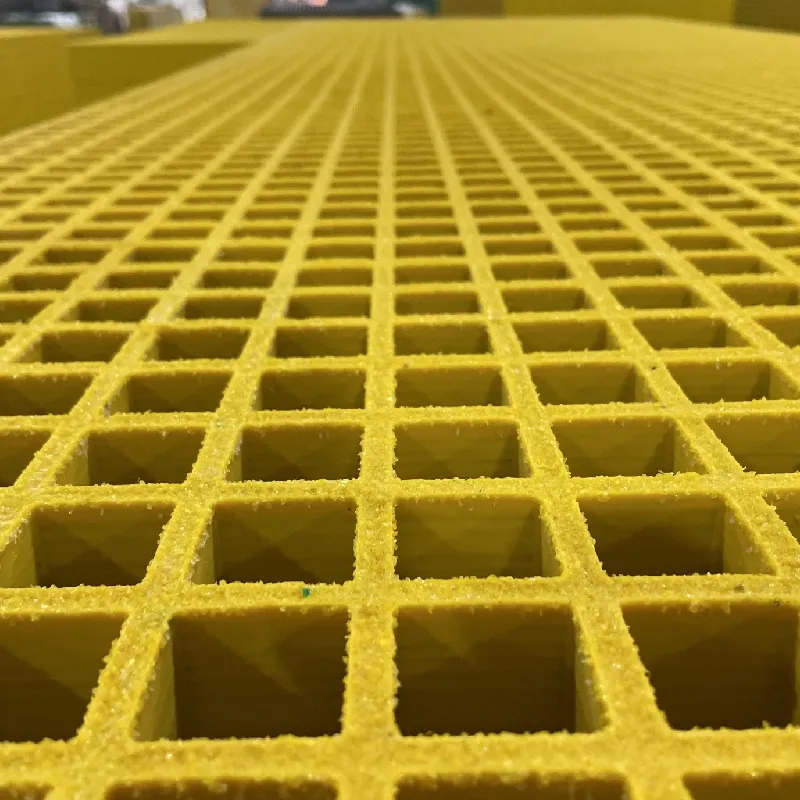loading...
- No. 9, Xingyuan South Street, Dongwaihuan Road, Zaoqiang County, Hengshui, Hebei, China
- admin@zjcomposites.com
- +86 15097380338
- Welcome to visit our website!
frp railing systems
The Benefits and Applications of FRP Railing Systems
In recent years, Fiber Reinforced Polymer (FRP) railing systems have gained popularity across various industries due to their superior performance and durability compared to traditional materials. Made from a composite of fibers enveloped in a polymer matrix, FRP railing systems offer a lightweight, corrosion-resistant, and highly customizable alternative to metal and wood railings. This article explores the benefits and applications of FRP railing systems, highlighting why they are becoming the go-to choice for architects, builders, and homeowners alike.
Durability and Strength
One of the most significant advantages of FRP railing systems is their exceptional durability. Unlike traditional materials like wood, which can rot or warp, or metal, which can corrode or rust, FRP materials are designed to withstand harsh environmental conditions. They are resistant to UV radiation, chemicals, and moisture, making them ideal for both indoor and outdoor applications. This resilience to wear and tear translates to lower maintenance costs over time, as FRP railings do not require frequent painting, staining, or sealing.
Moreover, FRP railings have high tensile strength, which allows them to support heavy loads without bending or breaking. This strength is crucial for ensuring safety in various applications, especially in residential, commercial, and industrial settings.
Lightweight and Versatile
Another essential characteristic of FRP railing systems is their lightweight nature. This feature simplifies the installation process, reducing labor costs and the need for heavy lifting equipment. FRP railings can be easily molded into various shapes and sizes, offering architects and designers significant flexibility. This versatility allows for innovative designs that can enhance the aesthetic appeal of any project, from minimalist styles to more intricate patterns.
Furthermore, FRP materials can be manufactured in numerous colors and finishes, ensuring that they can be tailored to fit the specific design requirements of any space. Whether for a modern commercial building or a rustic home, FRP railings can be customized to meet aesthetic standards without compromising functionality.
frp railing systems

Environmental Impact
As sustainability becomes increasingly important in construction and design, FRP railing systems offer an environmentally friendly alternative. The production processes of FRP materials typically consume less energy compared to traditional materials, contributing to reduced greenhouse gas emissions. Additionally, FRP railings are recyclable, meaning they can be repurposed at the end of their life cycle rather than ending up in landfills. This characteristic aligns with the growing trend towards sustainable building practices and green materials.
Applications Across Industries
FRP railing systems find applications across a broad spectrum of industries. In construction, they are widely used in residential decks, balconies, staircases, and walkways, providing both safety and visual appeal. The industrial sector benefits from FRP railings in factories, warehouses, and chemical plants, where their resilience to corrosive substances is crucial.
In public infrastructure, FRP railings are used in parks, bridges, and pedestrian walkways, ensuring safety while seamlessly blending into the environment. They are particularly valuable in coastal and marine settings where traditional materials may deteriorate rapidly due to saltwater exposure.
Conclusion
In summary, FRP railing systems are an innovative solution that addresses many of the shortcomings associated with traditional railing materials. Their combination of durability, lightweight design, environmental sustainability, and aesthetic versatility makes them a compelling choice for a wide array of applications. As the construction and design industries continue to evolve, it is clear that FRP materials will play an increasingly vital role in creating safe, functional, and beautiful spaces. Embracing FRP railing systems is not just a trend; it represents a strategic move towards more resilient and environmentally friendly building practices.
-
GRP Structures: The Future of Lightweight, High-Performance EngineeringNewsJun.20,2025
-
FRP Water Tank: High-Performance Storage for Corrosive and Clean Water SystemsNewsJun.20,2025
-
FRP Square Tube: The New Industry Standard for Chemical and Structural ApplicationsNewsJun.20,2025
-
FRP Pultruded Profiles: The Ultimate Choice for Lightweight Structural StrengthNewsJun.20,2025
-
FRP Handrails: The Safer, Smarter, and Stronger Choice for Modern InfrastructureNewsJun.20,2025
-
FRP Grating: The Smart Solution for Durable, Lightweight Industrial FlooringNewsJun.20,2025
-
Why Choose a Galvanized Water Tank for Your Storage NeedsNewsMay.21,2025
